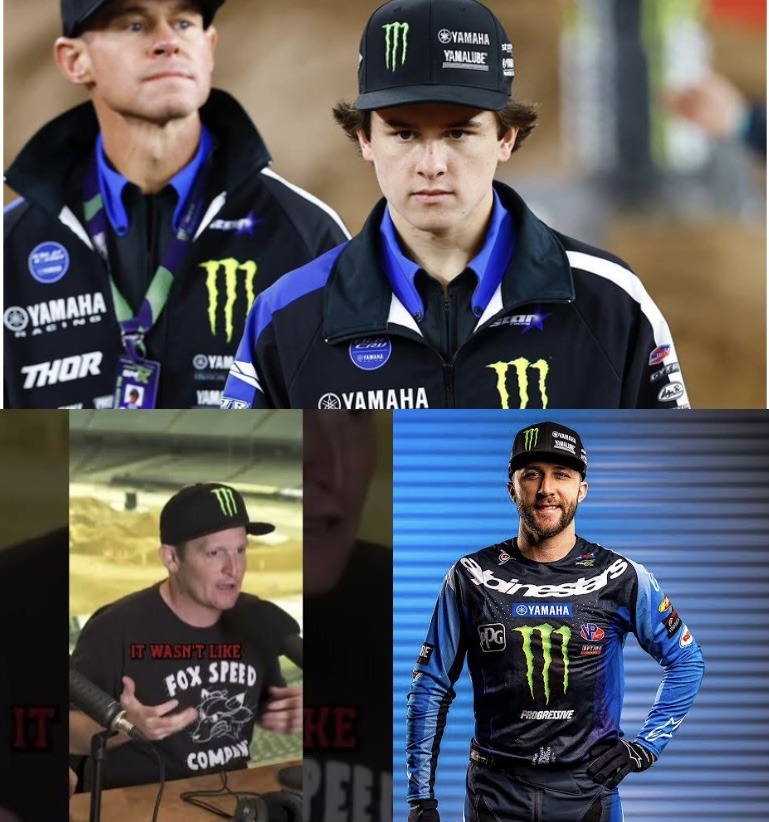
Haiden Deegan, one of the rising stars in the motocross world, has fired back at Ricky Carmichael’s recent comments about Eli Tomac’s success and the role that modern technology plays in shaping his skills. In an interview, Carmichael, who is widely regarded as one of the greatest motocross riders of all time, suggested that Tomac’s performance is significantly aided by advancements in technology, especially in comparison to past eras.
However, Deegan, who comes from a family with deep roots in the sport, offered a refreshing and pointed counter-argument. “Ricky had way better bikes compared to the 1980s,” Deegan remarked. “And the 80s greats had better bikes than what the guys raced in the 1970s. It’s all relative to the competition—who shows up on race day.” While acknowledging Carmichael’s dominance in his own era, Deegan didn’t hold back in expressing that the discussion around technology and performance is often more nuanced than it might seem.
Technology’s Role in the Evolution of Motocross
To fully appreciate Deegan’s comments, it’s important to recognize the evolution of motocross technology. In the 1970s, riders raced bikes that were significantly less advanced compared to what we see today. The suspension systems were rudimentary, engines were far less reliable, and the frames were heavier and less agile. By the 1980s, the game began to change, with more sophisticated suspension systems and lighter, faster frames entering the market. As a result, riders like Rick Johnson, Jeff Ward, and Johnny O’Mara, who were active during the 1980s, had a significant advantage in terms of bike technology compared to the previous generation.
Fast forward to the early 2000s, and the sport saw even greater leaps with the introduction of fuel-injection systems, electronic mapping, and advanced suspension technology. In this sense, every era of motocross 
Ricky Carmichael’s Dominance and the Role of Technology
Ricky Carmichael is often referred to as the “Greatest of All Time” (GOAT) in motocross, a title that is hard to argue with considering his accomplishments. With seven AMA Motocross National Championships and numerous Supercross titles, Carmichael’s legacy is undeniable. However, as Deegan noted, Carmichael’s dominance came during a time when the technology of the late 1990s and early 2000s offered advantages over earlier bikes. In fact, Carmichael himself has spoken about how advancements like better suspension, more powerful engines, and more reliable bike technology made a significant impact on his performance and consistency on the track.
While Carmichael’s skills and work ethic were central to his success, Deegan’s point is that technology has always played a role in shaping the sport’s dynamics. The bikes Ricky raced on in the early 2000s were far more advanced than the ones used by riders in the 1970s or even the 1980s. This advancement is not unique to Tomac’s era, but rather a natural progression in the sport. Every rider in every era has benefited from advancements in bike technology, and each generation’s greatness can be attributed not only to their individual talents but also to the tools they had at their disposal.
Haiden Deegan’s Perspective on the Modern Era
As a young rider, Deegan understands that the current generation of motocross stars, including Eli Tomac, have access to some of the most cutting-edge technology ever seen in the sport. Tomac, with his blend of skill, experience, and bike handling, has enjoyed a great career, particularly in recent years. But Deegan’s argument is simple: the competition each rider faces is what truly defines their greatness.
“It’s all about who shows up on race day,” Deegan emphasized. Despite the technological advantages of modern machines, it’s still the rider’s skill, mindset, and ability to rise to the occasion that truly makes the difference. Whether it’s the days of Carmichael, Johnson, or Tomac, each era has its own level of competition, and every rider’s success is shaped by how they perform against the best in their time.
Deegan, who is quickly becoming one of the most talked-about young riders in the sport, has a unique perspective on this conversation. Having grown up around the sport and seen the evolution of motocross firsthand, he’s aware of how much has changed in terms of technology. But he also knows that no amount of machinery can replace the drive, dedication, and heart required to win races at the highest level.
Final Thoughts
In the end, Deegan’s response to Carmichael’s comments sheds light on a fundamental truth about motocross: technology is just one part of the equation. While bikes have certainly improved over the decades, it’s the riders who adapt and excel in the ever-evolving landscape of motocross who truly shine. Whether it’s Carmichael, Tomac, or Deegan, each rider’s legacy is built not just on the tools they use, but on how they rise to the challenges they face—on race day and beyond.
As Deegan continues to make his mark on the sport, it’s clear that he understands what it takes to be great in any era. His response to Carmichael’s remarks proves that while technology may change, the heart of motocross remains the same: it’s all about who shows up and how they perform when the gate drops.
Leave a Reply